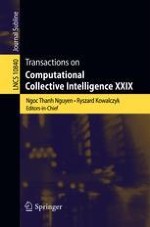2018 | OriginalPaper | Chapter
WordNet and Wiktionary-Based Approach for Word Sense Disambiguation
Authors : Mohamed Ben Aouicha, Mohamed Ali Hadj Taieb, Hania Ibn Marai
Published in: Transactions on Computational Collective Intelligence XXIX
Publisher: Springer International Publishing
Activate our intelligent search to find suitable subject content or patents.
Select sections of text to find matching patents with Artificial Intelligence. powered by
Select sections of text to find additional relevant content using AI-assisted search. powered by
